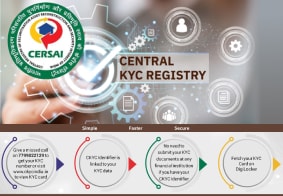CKYC Registry
-
Customer Service Contact us Service request Locate a branch Complaints
Find all the help you need
Scan the QR, get our app, and find help on your fingertips

Help CenterSupport topics, Contact us, FAQs, Complaints and more
-
Login
Are you ready for an upgrade?
Login to the new experience with best features and services
-
Login
Are you ready for an upgrade?
Login to the new experience with best features and services
- Accounts
-
Deposits
IDFC FIRST Bank Deposits
View all Deposits -
Loans
IDFC FIRST Bank Loans
View all Loans - Wealth & Insure
-
Payments
IDFC FIRST Bank Payments
View all Payments -
Cards
IDFC FIRST Bank Cards
View all Cards - Blogs
- Corporate Account
-
Cash Management Services
IDFC FIRST Bank Cash Management Services
View all Cash Management Services - Supply Chain Finance
-
Corporate Lending
IDFC FIRST Bank Lending
View all -
Treasury
IDFC FIRST Bank Treasury
See more details - NBFC Financing
- BRAVO (Auto Sweep)
-
MSME Accounts
IDFC FIRST Bank MSME Accounts
View all Accounts -
Trade Services
- MSME Loan
-
MSME Solutions
- Debit Card
-
Offers
Support topics, Contact us, FAQs, Complaints and more
- IDFC FIRST Bank Accounts
-
Savings Account
-
Corporate Salary
Account -
Senior Citizens
Savings Account -
First Power
Account -
Current Account
-
NRI Savings
Account -
TASC Institutional
Account -
Savings Account
Interest Calculator
- IDFC FIRST Bank Deposits
-
Fixed Deposit
-
Recurring Deposit
-
NRI Fixed Deposit
-
Safe Deposit Locker
-
FD Calculator
-
RD Calculator
- IDFC FIRST Bank Loans
-
Personal Loan
-
Consumer Durable
Loan -
Home Loan
-
Business Loan
-
Professional Loan
-
Education Loan
-
New Car Loan
-
Pre-owned Car Loan
-
Two Wheeler Loan
-
Pre-owned Two
Wheeler Loan -
Commercial Vehicle
Loan -
Gold Loan
-
Loan Against Property
-
Loan Against Securities
-
Easy Buy EMI card
-
Personal Loan
EMI Calculator -
Education Loan
EMI Calculator -
Home Loan
EMI Calculator -
EMI Calculator
-
Personal Loan Eligibility Calculator
- IDFC FIRST Bank Wealth & Insure
-
FIRST Select
-
FIRST Wealth
-
FIRST Private
-
Mutual Funds
-
Sovereign Gold Bond
-
Demat Account
-
Term Insurance
-
Life Insurance
-
Health Insurance
-
General Insurance
-
Bonds
-
Loan Against
Securities -
Portfolio Management
Service
- IDFC FIRST Bank Payments
-
FASTag
-
Credit Card
Bill Payments -
UPI
-
Funds Transfer
-
Forex Services
-
Pay Loan EMI
- IDFC FIRST Bank Cards
-
Ashva :
Metal Credit Card -
Mayura :
Metal Credit Card -
FIRST Millennia
Credit Card -
FIRST Classic
Credit Card -
FIRST Select
Credit Card -
FIRST Wealth
Credit Card -
FIRST WOW!
Credit Card -
Deals
-
Debit Cards
-
Co-branded Cards
-
Credit Card
EMI Calculator -
FIRST Corporate
Credit Card -
FIRST Purchase
Credit Card -
FIRST Business
Credit Card
- Premium Metal Credit Cards
-
AshvaLifestyle1% Forex₹2,999
-
MayuraLifestyleZero Forex₹5,999
-
FIRST PrivateInvite Only
- Best for travellers
-
Diamond Reserve Credit CardZero ForexTravel₹3,000
-
FIRST WOW! BlackZero ForexTravelDual Cards
-
IndiGo IDFC FIRST Dual Credit CardTravelLifestyle₹4,999
-
MayuraZero ForexMetal₹5,999
-
Ashva1% ForexMetal₹2,999
-
FIRST WOW!Zero ForexTravelLifetime Free
-
FIRST SWYPTravel OffersEMI₹499
-
FIRST Select1.99% ForexLifestyleLifetime Free
-
FIRST Wealth1.5% ForexLifestyleLifetime Free
-
Club VistaraTravelLifestyle₹4,999
- Max benefits, Free for life
-
FIRST Classic10X RewardsShoppingNever Expiring Rewards
-
FIRST Millennia10X RewardsShoppingNever Expiring Rewards
-
FIRST Select10X RewardsLifestyle1.99% Forex
-
FIRST Wealth10X RewardsLifestyle1.5% Forex
-
FIRST WOW!RewardsTravelZero Forex
-
LIC ClassicRewardsInsuranceShopping
-
LIC SelectRewardsInsuranceShopping
- Reward Multipliers
-
Diamond Reserve Credit CardLifestyleZero Forex₹3,000
-
AshvaLifestyleMetal₹2,999
-
MayuraLifestyleZero Forex₹5,999
-
FIRST ClassicNever Expiring RewardsShoppingLifetime Free
-
FIRST MillenniaNever Expiring RewardsShoppingLifetime Free
-
FIRST SelectNever Expiring RewardsLifestyleLifetime Free
-
FIRST WealthNever Expiring RewardsLifestyleLifetime Free
- Rewards & Credit on UPI
-
FIRST WOW! BlackUPIVirtualRewards
-
IndiGo IDFC FIRST Dual Credit CardUPITravelDual cards
-
FIRST Power+FuelUPI₹499
-
FIRST PowerFuelUPI₹199
-
FIRST EA₹NVirtual1% Cashback₹499
-
FIRST DigitalVirtualUPI₹199
- Fuel and Savings
-
FIRST PowerRewardsUPI₹199
-
FIRST Power+RewardsUPI₹499
-
LIC ClassicRewardsInsuranceShopping
-
LIC SelectRewardsInsuranceShopping
- Express and Flaunt
-
Diamond Reserve Credit CardTravelZero Forex₹3,000
-
AshvaMetal1% Forex₹2,999
-
MayuraMetalZero Forex₹5,999
-
FIRST SWYPEMIOfferMAX₹499
-
FIRST MillenniaRewardsShoppingLifetime Free
- FD Backed rewarding Credit Cards for all
-
FIRST WOW! BlackZero ForexTravelAssured
-
FIRST EA₹NVirtualCashback₹499
-
FIRST WOW!Zero ForexTravelLifetime Free
-
CreditPro Balance TransferTransfer & SaveReduce InterestPay Smartly
- IDFC FIRST Bank NRI Forex Solutions
-
Send money to India-Wire transfer
-
Send money to India-Digitally
-
Send money abroad
-
Max Returns FD (INR)
- IDFC FIRST Bank MSME Accounts
-
Platinum Current
Account -
Gold
Current Account -
Silver Plus
Current Account -
Merchant Multiplier
Account -
Agri Multiplier
Account -
TASC Institutional
Account -
Dynamic Current
Account -
World business
Account -
First Startup
Current Account -
EEFC Account
-
RERA Account
-
Other Accounts
- IDFC FIRST Bank Business Loans
-
Business Loan
-
Professional Loan
-
Loan Against Property
-
Business Loan for Women
-
Working Capital Loan
-
Construction Equipment Loan
-
Machinery Loan
-
Healthcare Equipment Loan
- IDFC FIRST Bank Business Solutions
-
Payment Solutions
-
Tax Payments
-
Doorstep Banking
-
Point of Sale (POS)
-
Escrow Accounts
-
NACH
-
Payment Gateway
-
UPI
-
Virtual Accounts
-
As per amendment in the Income Tax Rules, PAN or Aadhaar are to be mandatorily quoted for cash deposit or withdrawal aggregating to Rupees twenty lakhs or more in a FY. Please update your PAN or Aadhaar. Kindly reach out to the Bank’s contact center on 1800 10 888 or visit the nearest IDFC FIRST Bank branch for further queries.
-
-
Most Searched
Sorry!
We couldn’t find ‘’ in our website
Here is what you can do :
- Try checking the spelling and search
- Search from below suggestions instead
- Widen your search & try a more generic keyword
Suggested
Get a Credit Card
Enjoy Zero Charges on All Commonly Used Savings Account Services
Open Account Now
Savings Account
Dormant Account: Meaning, reasons & how to reactivate
Key Takeaways
Bank accounts become inoperative (or dormant), if left unused over a period of time.
As per RBI guidelines, savings/current accounts with no transactions for over two years will be marked inoperative.
You cannot make payments, transfers, withdrawals, or log into your account when it is inoperative.
To reactivate an inoperative account, contact the bank, submit a form with necessary documents, and make at least one transaction.
While reactivating, maintain the minimum balance requirement.
What is an inactive or inoperative account?
Bank accounts can become inoperative if left unused for a specified period, making it crucial to keep your account active with regular transactions. If your account remains inactive for an extended time, it may be classified as a dormant account, restricting payments, withdrawals, or transfers.
According to the RBI guidelines, a savings or current account with no customer-initiated transactions for over 12 months is considered inactive. This step is taken to prevent fraud and protect account holders.
Inactivity may result from various reasons including the account holder's oversight, changing financial priorities, or lack of need to use the account. Despite not being used, an inactive account may still accrue interest, depending on the bank's policies. It's essential for account holders to monitor their accounts regularly and understand their bank's terms to prevent accounts from being classified as inactive and maintain their financial health.
If your account has been declared inoperative, don’t worry—you can reactivate it easily. Read on to learn how to activate a dormant account and regain full access to banking services.
READ MORE
Difference between a dormant and inactive account
An inactive savings account typically refers to an account in which no financial activity has been carried out for a period of 12 months, often determined by the bank's policies. During this time, the account remains open and accessible, but no transactions can be done. Inactive accounts might still accrue interest, depending on the bank's terms.
A dormant/inoperative savings account is one that has been inactive for an extended period, usually exceeding 24 months. In this case, the bank may classify the account as dormant, resulting in restrictions such as limited access or the termination of interest accrual. Reactivating a dormant account typically requires specific actions such as visiting the bank or initiating a transaction.
How to reactivate an inactive savings account?
To reactivate an inactive savings account, contact your bank to inquire about their processes. Provide the necessary identification documents and submit the required forms. Typically, you'll need to make a transaction such as a deposit or withdrawal to reactivate the account. Ensure that you meet the minimum deposit requirements. Once completed, confirm with the bank that your account is reactivated and stay informed about future inactivity guidelines.
What happens if your savings account becomes inoperative/dormant?
Different financial institutions have different rules for an inoperative account. If an inoperative account has no balance, some institutions close it after a certain period. However, with IDFC FIRST Bank, you are informed before your account is closed. Mentioned below are some of the services/transactions that are not permitted if your account is inoperative:
- Change of residence
- Renewal of an ATM or debit card
- Addition or removal of a joint account holder
- Change of signature
- Transactions through internet banking or at a bank branch
DEA Fund: Unclaimed balances in savings/current accounts which have not been operated for 10 years are transferred to the Depositor Education and Awareness (DEA) Fund by the Reserve Bank of India (RBI).
To ensure your account stays active, you must conduct any financial transaction in the account such as check transactions, cash withdrawals, outbound bills, cash deposits etc., regularly.
How to reactivate an inoperative account?
Banks cannot levy additional fees while reactivating an inoperative account according to RBI norms. To reactivate an inoperative account, you must submit a completed application form to the bank detailing the reasons for the account's inactivity. You can visit the nearest IDFC FIRST Bank branch or contact your relationship manager. You will require all KYC documents as well as ID and address proofs of all signatories to revive your account.
Once the above process is done and upon the bank official’s confirmation, you should make at least one financial transaction in your account. Some of the relevant financial transactions are:
- Deposit money using a cheque
- Deposits of cash into your account
- An ATM can be used to make a withdrawal or a deposit.
- Make an online transaction in your dormant account.
Claiming Unclaimed Deposits from the Depositor Education and Awareness Fund (DEAF)
This guide provides detailed information on how to claim funds that have been transferred to the Depositor Education and Awareness Fund (DEAF). We have outlined the process for individuals, nominees, legal heirs, and non-individual account holders to reclaim their money from inoperative or unclaimed accounts.
- What is the Depositor Education and Awareness Fund (DEAF)?
The Depositor Education and Awareness Fund (DEAF) is a fund established by the Reserve Bank of India (RBI) in 2014. As per RBI guidelines, the balances in bank accounts that have been inoperative or unclaimed for a period of 10 years or more are required to be transferred by the respective banks to the DEAF. This transfer includes the principal amount and any accrued interest.The primary objective of this fund is to promote depositors' interests and support depositor education and awareness initiatives.
Even if your funds have been transferred to the DEAF, you or your legal heirs are fully entitled to claim the money at any time from the bank where the account was held. The bank will process the claim and refund the amount after proper verification.
- How to find and claim funds from DEAF?
Once an unclaimed deposit is identified, follow the appropriate process below to claim your funds.a. Claim by the Account Holder
If you are the original account holder, you can reactivate the account and claim the funds by visiting your nearest IDFC FIRST Bank with a duly filled and signed claim form along with a recent photograph, valid Identity/Address proof, along with account details such as passbook, statement, cheque book etc.
Important Note: Please carry the original copies of your identity and address proof for verification by the bank.
b. Claim by a Nominee or Legal Heir
In the event of the original account holder's demise, the nominee registered with the account or the legal heirs can file a claim by visiting the nearest bank branch with the required documents. Locate your nearest IDFC FIRST Bank branch here.
The bank will process the claim as per its internal policies for settling accounts of deceased customers.
c. Claim for Non-Individual Accounts
For accounts belonging to a company, firm, institution, or trust, the claim process is as follows:
- Submit Claim on Letterhead: The claim form must be submitted on the official letterhead of the company, firm, or institution.
- Authorized Signatories: The form must be duly signed by all current authorized signatories.
- Submit Re-KYC Documents: Fresh KYC (Know Your Customer) documents for the entity must be provided.
The bank may request additional documents as needed to complete the verification process.
- What is the processing time for a DEAF Claim?
Upon successful submission and verification of all required documents, the bank will process your request. The average turnaround time for the amount to be credited to your account is approximately 10 working days. This timeline may vary depending on the complexity of the case.
Regular transactions are essential to keep your account active. Ensure that you use all your bank accounts regularly. With its customer-first values, IDFC FIRST Bank clearly mentions all the terms for keeping your account active in the welcome kit. You also enjoy zero charges on all commonly used Savings Account services, helping you save more. Opening a bank account online with IDFC FIRST Bank will also help in getting one of the highest bank account interest rates with a monthly interest credit facility for better returns over time. Apply now!
List of Unclaimed Deposits for FY 2025
Disclaimer
The contents of this article/infographic/picture/video are meant solely for information purposes. The contents are generic in nature and for informational purposes only. It is not a substitute for specific advice in your own circumstances. The information is subject to updation, completion, revision, verification and amendment and the same may change materially. The information is not intended for distribution or use by any person in any jurisdiction where such distribution or use would be contrary to law or regulation or would subject IDFC FIRST Bank or its affiliates to any licensing or registration requirements. IDFC FIRST Bank shall not be responsible for any direct/indirect loss or liability incurred by the reader for taking any financial decisions based on the contents and information mentioned. Please consult your financial advisor before making any financial decision.
The features, benefits and offers mentioned in the article are applicable as on the day of publication of this blog and is subject to change without notice. The contents herein are also subject to other product specific terms and conditions and any third party terms and conditions, as applicable. Please refer our website www.idfcfirst.bank.in for latest updates.

























